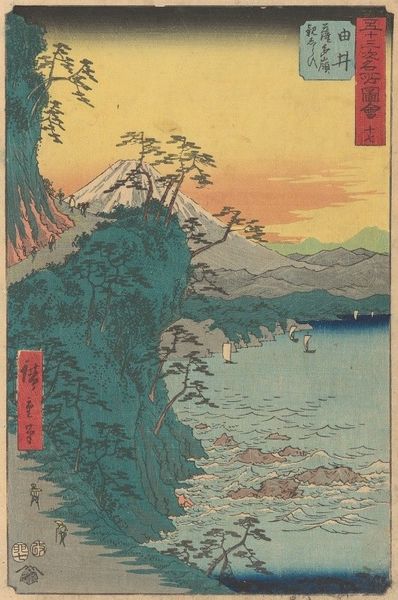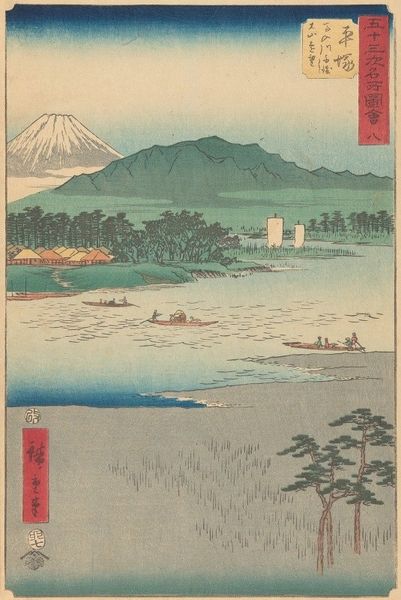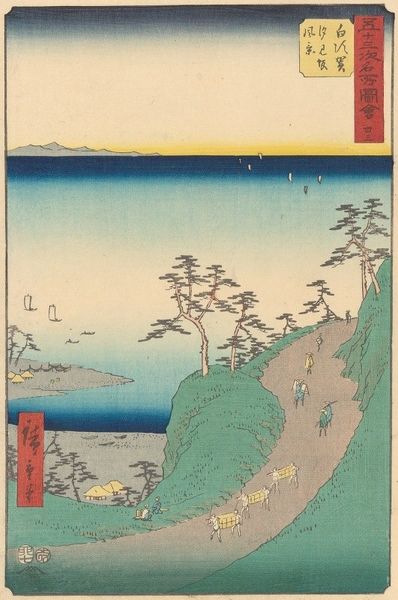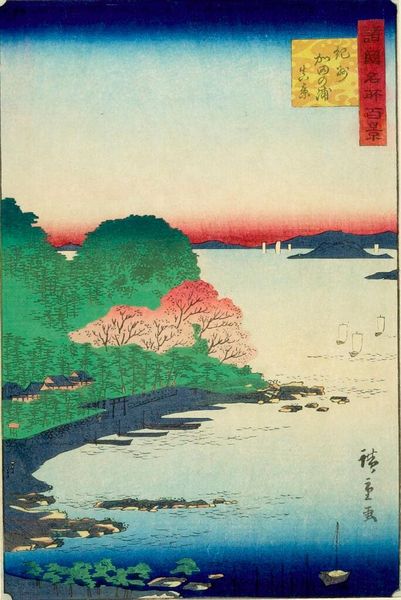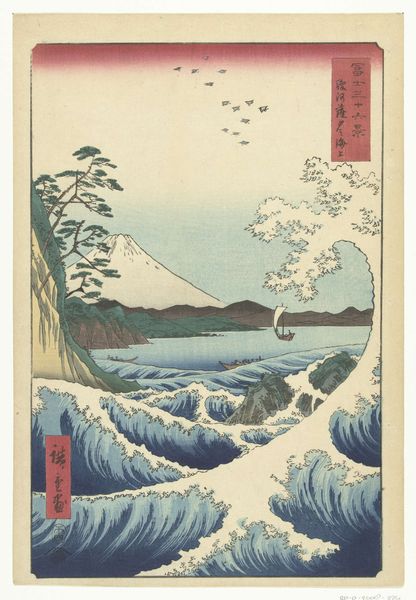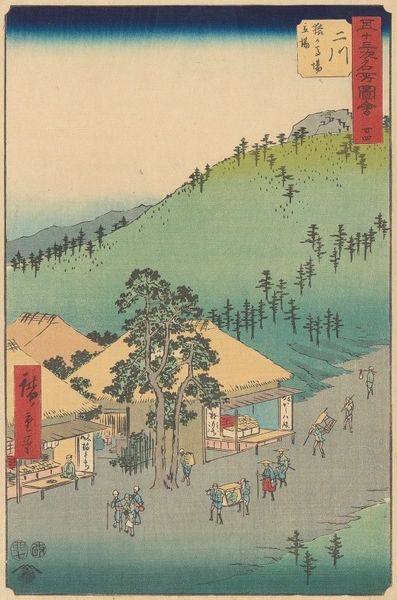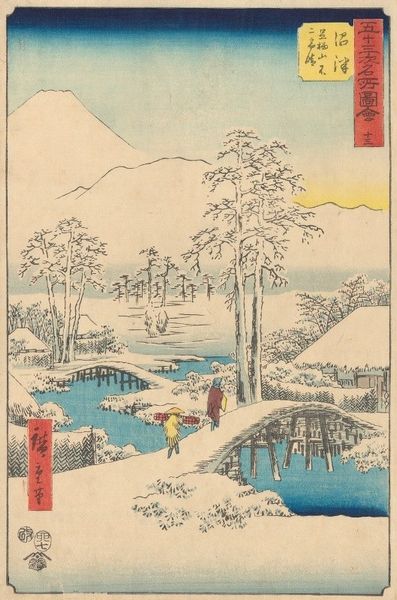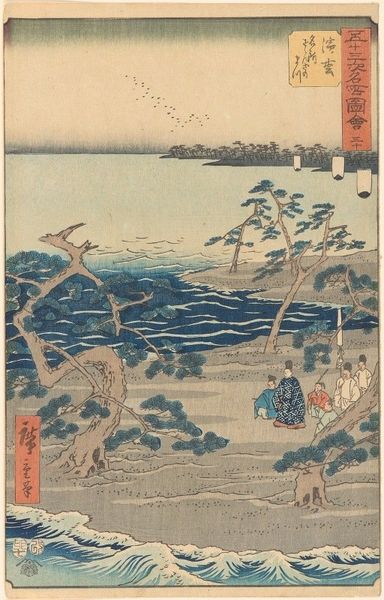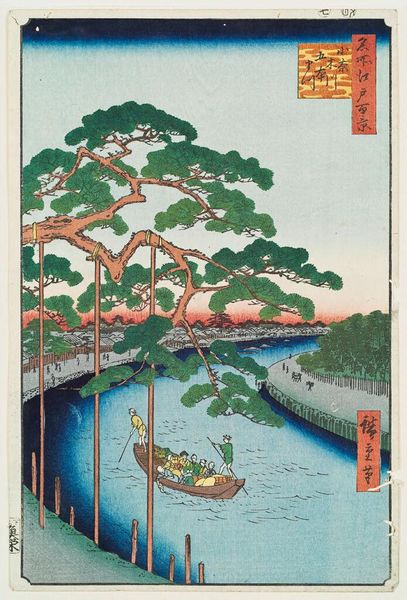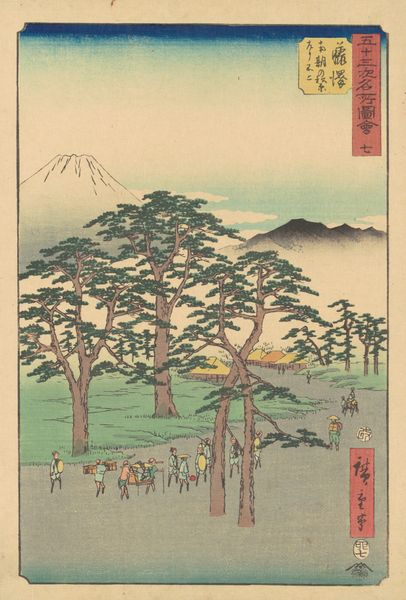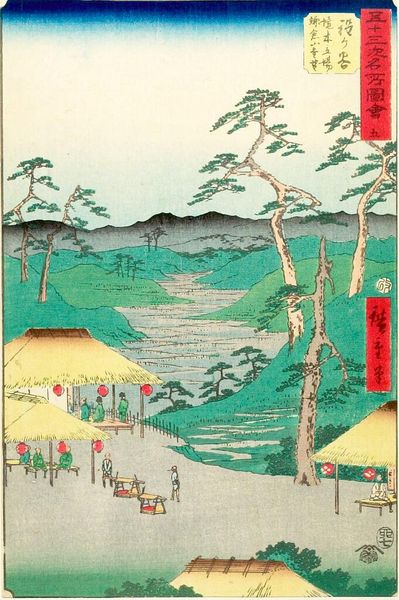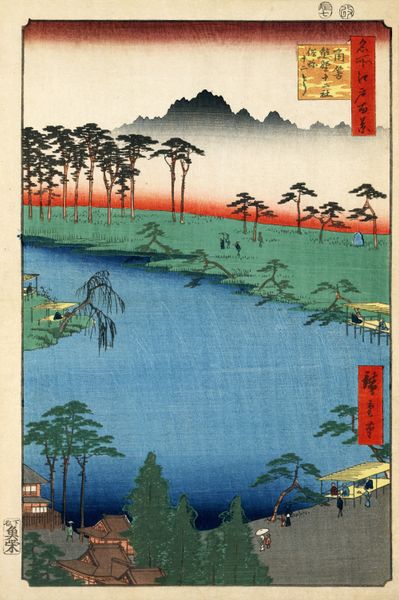
Copyright: Public Domain: Artvee
Editor: Here we have Kobayashi Kiyochika's "Tagonoura, near Fuji," created in 1897, using watercolor print techniques. It's a serene landscape, almost dreamlike, with the iconic Mount Fuji dominating the background. What draws your attention to this work? Curator: The enduring fascination with Mount Fuji is central, of course. Beyond the purely aesthetic, consider the political context. Kiyochika created this during the Meiji period, a time of rapid modernization and westernization in Japan. Think about how the artist uses traditional ukiyo-e techniques to depict a national symbol during intense cultural shifts. What does representing Fuji mean in this era? Editor: That's fascinating. So it's not just a pretty picture; it's about national identity? The placement of the boats seems intentional too. Curator: Precisely. The boats laden with goods point to economic activity, connecting local industry with the imposing, unchanging presence of Fuji. Are we seeing an idealized vision of progress, where traditional values exist harmoniously alongside modernization? Or is there an undercurrent of tension? Editor: I see what you mean. There’s a kind of quietness despite the implied commerce. Maybe that reflects the tension. I guess the muted tones enhance that, compared to earlier, bolder ukiyo-e. Curator: Absolutely. Kiyochika's style is part of the “kōga” movement, incorporating Western influences. The soft color palette and atmospheric perspective diverge from earlier styles. What does this adaptation of style tell us about the changing role of art and its accessibility to new audiences, both domestic and international? Editor: I hadn't considered that. So, it's about adapting tradition to engage with a globalizing world while still holding onto something distinctly Japanese. Thanks, that gives me a lot to think about. Curator: Indeed. The work's seemingly simple beauty masks a complex engagement with cultural identity and societal transformation during a pivotal era in Japanese history. I've learned much myself looking at this through your eyes.
Comments
No comments
Be the first to comment and join the conversation on the ultimate creative platform.
